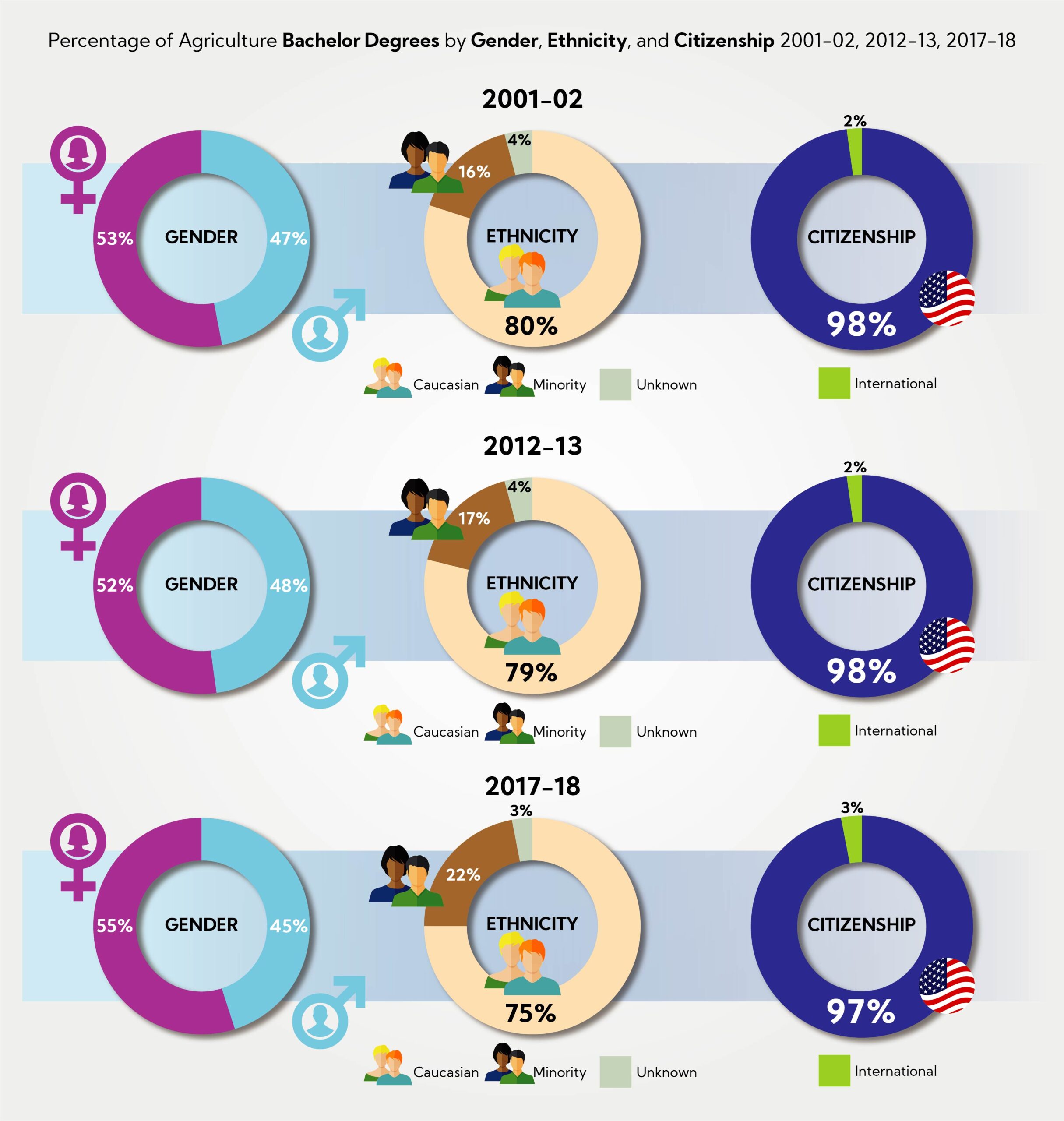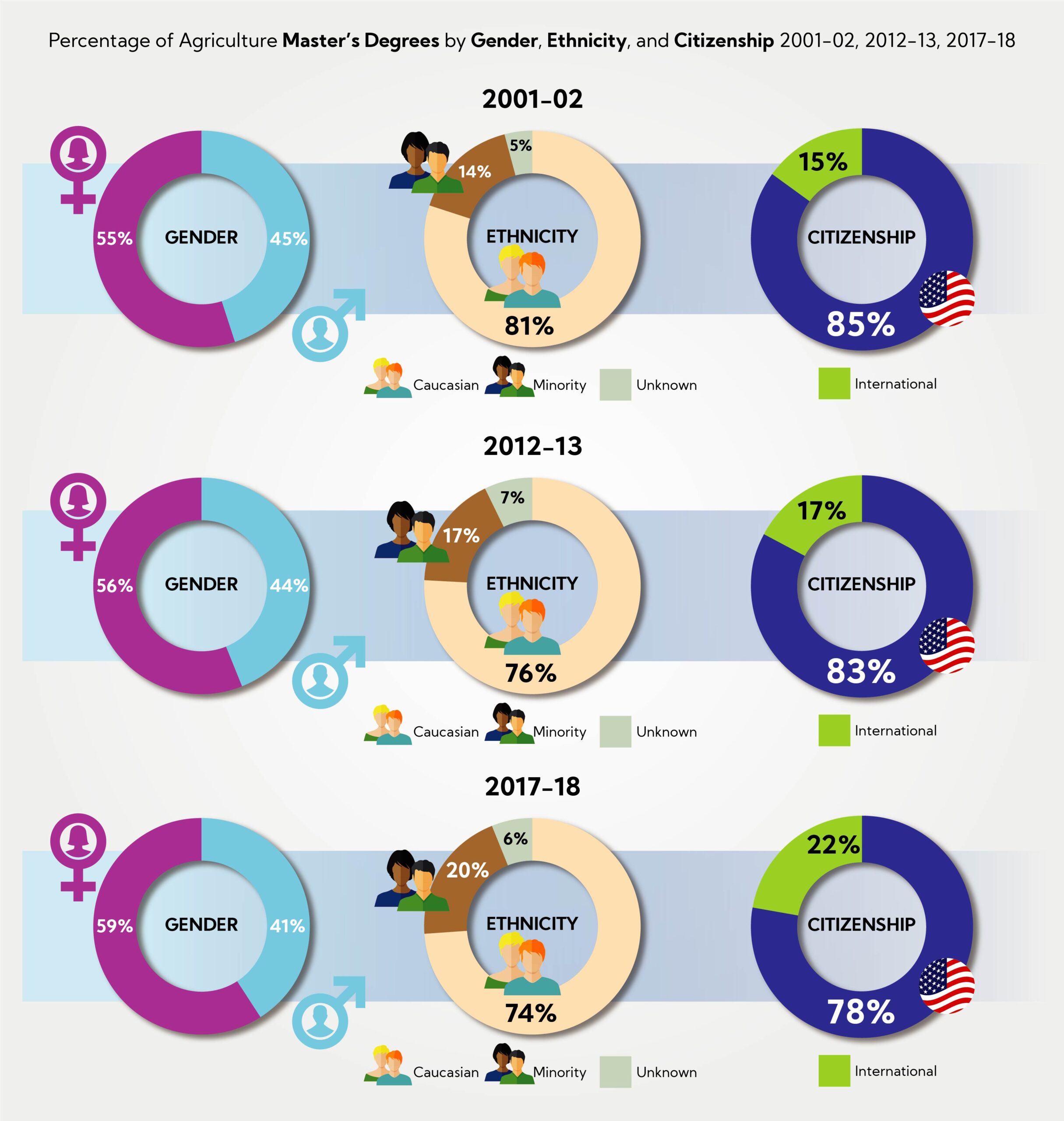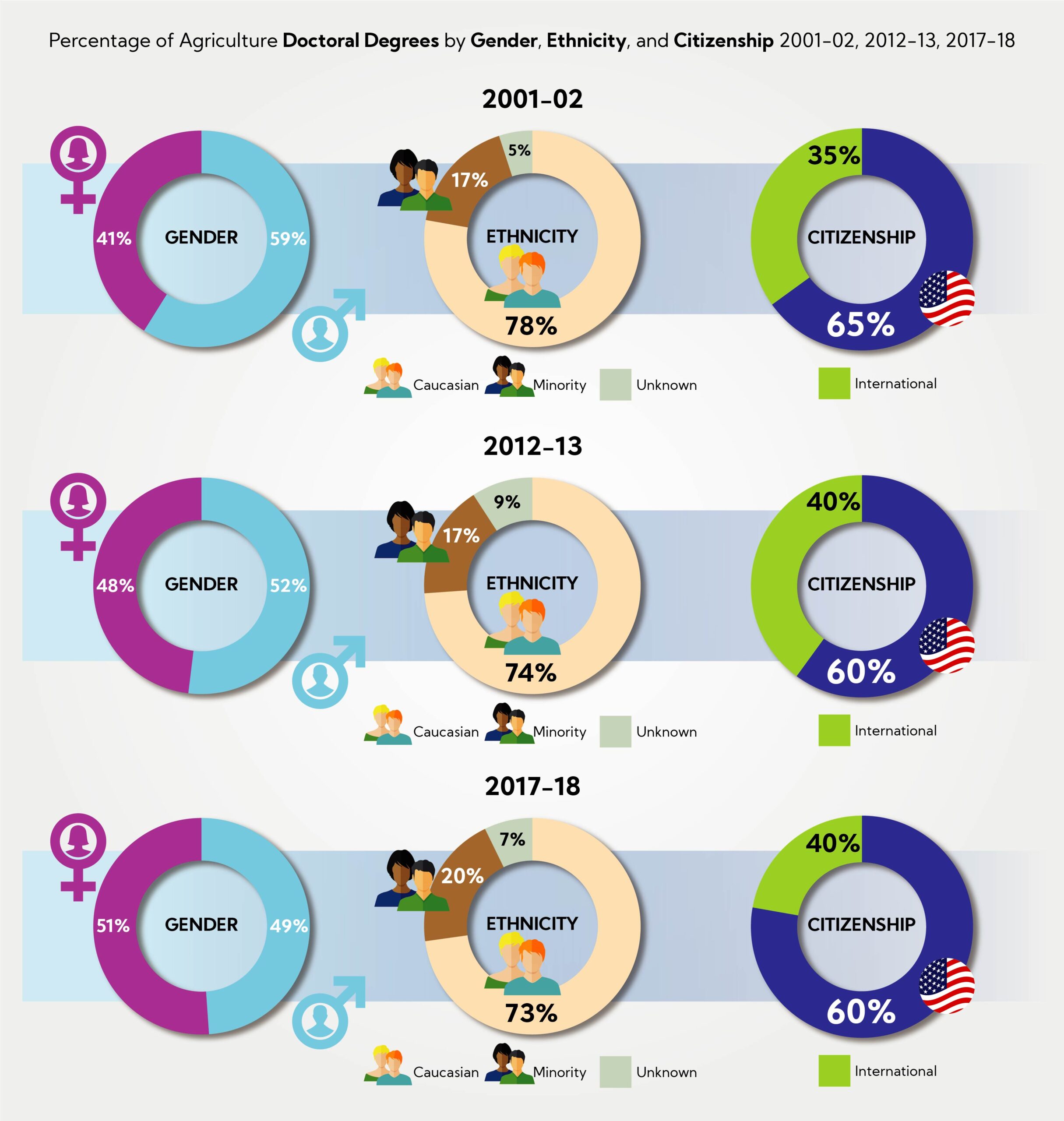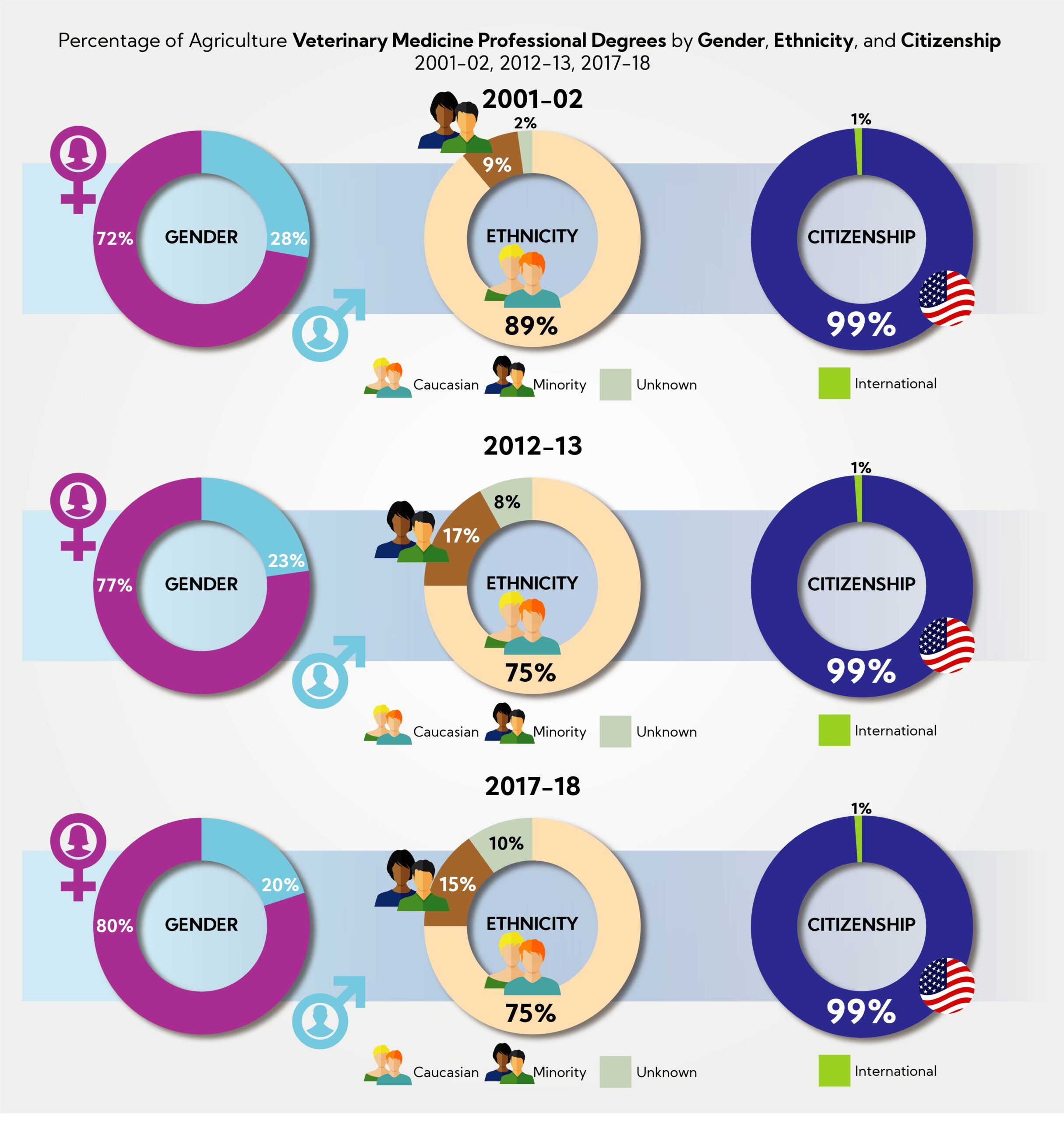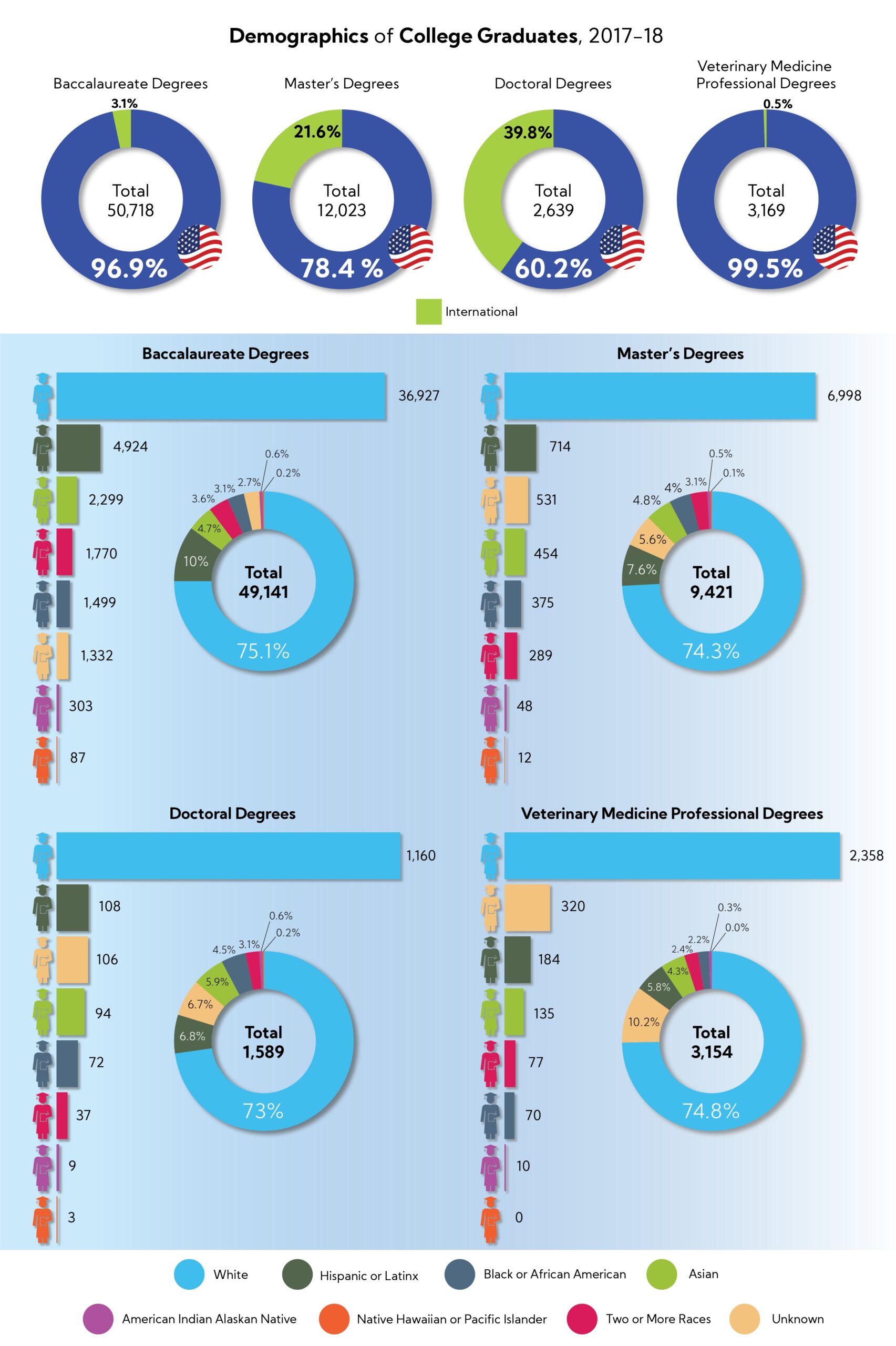Characteristics of Graduates
More than any other sector, the food, agriculture, renewable natural resources and the environment sector crosses economic, political, social and geographic lines. The work of this sector undergirds the very existence of all of humankind. Technological innovation and evolution – the product of a diverse and inclusive food, agriculture, renewable natural resources and the environment workforce – will need to support a global population projected to reach 10 billion by 2050. Research has shown that organizations that embrace diversity and inclusion in their ranks, and so have individuals with varied experiences and thought processes, successfully innovate. To continue resolving the complex environmental, social and economic issues directly impacting agriculture, food, agriculture, renewable natural resources and the environment, the United States will need an inclusive cadre of diverse professionals who are technically sound, globally competent and employable.
Given the global nature of the food, agriculture, renewable natural resources and the environment sector, diversity and inclusiveness are both strategic imperatives and the basis for its workforce. For the sector to fully address the needs of the United States, it must reflect the larger population that it serves. A more diverse and inclusive food, agriculture, renewable natural resources and the environment workforce will foster a more innovative and creative agricultural industry for the future. According to the U.S. Census Bureau, the collective percentage of African, Asian, Hispanic or Latinx, and multicultural Americans will continue to increase, as the percentage of Caucasians decreases. Trends in the food, agriculture, renewable natural resources and the environment sector show slight increases in the diversity of graduates across various degree levels, but more progress needs to be made to mirror demographic trends.
Demographics of Baccalaureate Degree Recipients
At the baccalaureate level, female graduates have comprised the majority of graduates over the past two decades. Some undergraduate majors tend to attract a greater proportion of female students, including animal sciences, agricultural education, agricultural communication and veterinary medicine (see below). Other majors tend to be chosen predominately by male students, such as agricultural engineering, forestry, agronomy and crop science, etc. Degree attainment by students from racial and ethnic minorities has increased, while Caucasian students have seen a slight but proportional decline over this same time frame. Degree attainment by U.S. citizens has remained relatively stable, while degree attainment by international students has increased slightly.
[Figure 7a. Changes in Demographics of College Graduates, 2001-02, 2012-13 and 2017-18: Baccalaureate Degrees]
Demographics of Master's Degree Recipients
At the master’s degree level, female graduates have outnumbered male graduates over the past two decades. Degree attainment by students from racial and ethnic minorities has increased, while the percentage of Caucasian students earning master’s degrees has slightly declined over this same time frame. Degree attainment by U.S. citizens has declined, while the number of international students receiving master’s degrees steadily increased.
[Figure 7b. Changes in Demographics of College Graduates, 2001-02, 2012-13 and 2017-18: Master’s Degrees]
Demographics of Doctoral Degree Recipients
At the doctoral level, female graduates in the last year of record accounted for the majority of graduates. Degree attainment by doctoral students from racial and ethnic minorities has increased, while Caucasian doctoral students have seen a slight but steady decline over the same time frame. Degree attainment by both U.S. citizens and international students has remained the same.
[Figure 7c. Changes in Demographics of College Graduates, 2001-02, 2012-13 and 2017-18: Doctoral Degrees]
Demographics of Veterinary Medicine Degree Recipients
The percentage of female graduates attaining degrees in veterinary medicine has continued to increase, while the percentage of male graduates has continued to decline. Degree attainment by Caucasian students has remained the same, while degree attainment by students from racial and ethnic minorities has decreased slightly. Degree attainment in veterinary medicine by citizenship has remained the same.
[Figure 7d. Changes in Demographics of College Graduates, 2001-02, 2012-13 and 2017-18: Veterinary Medicine Professional Degrees]
Racial and Ethnicity Distribution of College Graduates
[Figure 8. Self-Reported Racial and Ethnicity Distribution of College Graduates in Food, Agriculture, Renewable Natural Resources and the Environment, 2017-18]
Preliminary data on 2017-2018 degrees conferred from the Integrated Postsecondary Education Data System surveys conducted by the National Center for Education Statistics, U.S. Department of Education.
